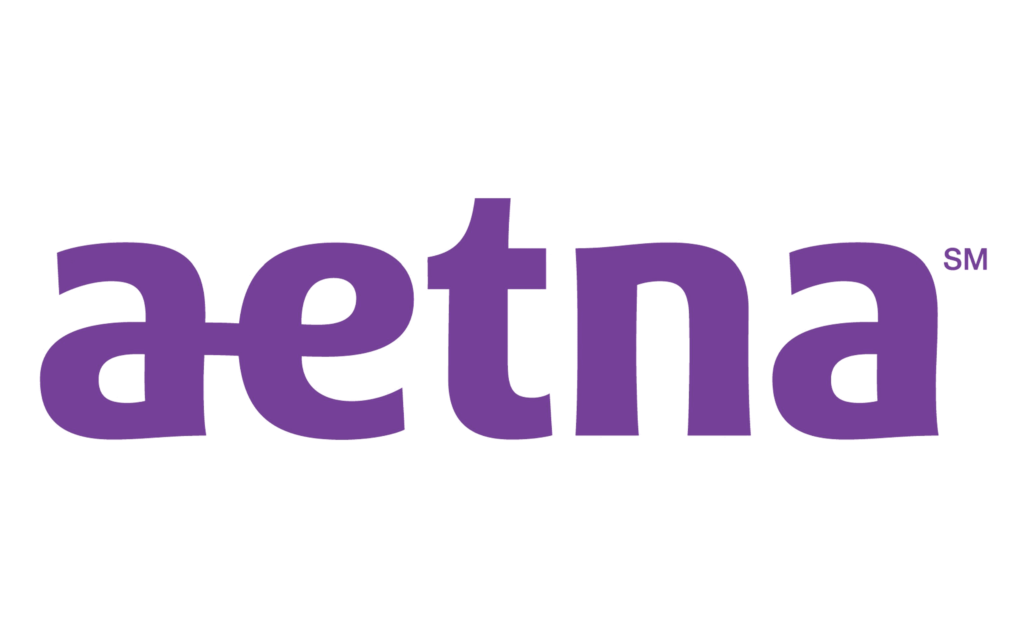Understanding Substance Use Disorder
The journey to help someone with a substance use disorder starts with a clear understanding of what it is, its prevalence, and its causes.
Definition and Prevalence
Substance Use Disorder (SUD) is a mental health condition involving a problematic pattern of substance use that can range from mild to severe, often known as addiction. Key signs and symptoms of substance use disorder typically include an overpowering desire to use the substance, increased tolerance, and withdrawal symptoms upon cessation. This disorder can significantly impact health, relationships, and quality of life.
In terms of prevalence, over 20 million people in the United States have at least one Substance Use Disorder (SUD). Furthermore, around 20% of individuals with depression or anxiety disorders also have a co-occurring SUD (Cleveland Clinic).
| Condition | Prevalence |
|---|---|
| Substance Use Disorder | Over 20 million |
| Co-occurring SUD with depression or anxiety | 20% |
Causes of Substance Use Disorder
Understanding the causes of Substance Use Disorder is key to gaining a better grasp of why people develop this condition. Genetic factors are responsible for 40% to 60% of the vulnerability to any substance use disorder. For example, having a first-degree relative with SUD increases the likelihood of developing it. Studies have identified genetic associations such as the CHRNA2 gene on chromosome 8 linked to cannabis use disorder.
In addition to genetic factors, certain environmental factors also contribute to the development of SUD. Adverse childhood experiences (ACEs), which are stressful events during childhood, are associated with an increased risk for developing health issues such as Substance Use Disorder (SUD). The risk of developing SUD increases with a higher number of ACEs experienced.
By understanding the signs and symptoms of substance use disorder, along with its prevalence and causes, individuals can gain valuable insights into how to help someone who may be struggling with this disorder. This foundational knowledge is an essential first step in providing effective assistance and support.
Recognizing Substance Use Disorder
Identifying the signs and symptoms of substance use disorder is the first crucial step towards offering help to someone struggling with this condition. These symptoms can vary widely and depend on factors such as the type of drug used, the amount used, the frequency of use, and individual differences. However, some common indicators cross the lines of different substances and can be split into three categories: general symptoms, behavioral indicators, and physical signs.
Symptoms of Substance Use Disorder
General symptoms of substance use disorder can include tolerance, withdrawal, loss of control over usage, social problems, risky use, and neglecting responsibilities (Mayo Clinic). These symptoms can manifest differently depending on the substance in question, but their presence should serve as a warning sign of possible substance use disorder.
| Symptoms | Description |
|---|---|
| Tolerance | Needing to use more of the substance to achieve the same effect |
| Withdrawal | Experiencing physical or mental discomfort when not using the substance |
| Loss of control | Difficulty in controlling or stopping the use of the substance |
| Social problems | Continuing to use the substance despite problems with relationships or social life |
| Risky use | Using the substance in situations where it is physically dangerous |
| Neglecting responsibilities | Failing to fulfill major obligations at work, school, or home due to substance use |
Behavioral Indicators
Behavioral indicators of substance use disorder often involve significant changes in a person’s normal behavior. These can include sudden mood swings, irritability, angry outbursts, loss of interest in activities once enjoyed, a decline in performance at work or school, and unexplained financial problems, among others (IHS).
| Behavioral Indicators | Description |
|---|---|
| Mood swings | Unpredictable changes in mood |
| Irritability | Increased feelings of annoyance or impatience |
| Angry outbursts | Sudden, uncontrollable episodes of anger |
| Loss of interest | Decreased interest in activities once enjoyed |
| Decline in performance | Drop in attendance or performance at work or school |
| Financial problems | Unexplained need for money or financial difficulties |
Physical Signs
Physical signs of substance use disorder can be more visible and include bloodshot eyes, changes in pupil size, changes in appetite or sleep patterns, sudden weight loss or weight gain, tremors, shakes, and slurred speech.
| Physical Signs | Description |
|---|---|
| Bloodshot eyes | Eyes that are red and irritated |
| Changes in pupil size | Pupils that are larger or smaller than usual |
| Changes in appetite or sleep | Unexplained shifts in eating or sleeping patterns |
| Weight fluctuations | Sudden weight loss or gain |
| Physical discomfort | Tremors, shakes, or unexplained physical discomfort |
| Slurred speech | Difficulty articulating words clearly |
Recognizing the signs and symptoms of substance use disorder is the first crucial step in helping someone struggling with this condition. Equipping oneself with this knowledge can lead to early intervention, which greatly increases the chances of successful treatment and recovery.
The Impact of Substance Use Disorder
Substance Use Disorder (SUD) can have a profound impact on an individual’s health and lifestyle, often leading to serious consequences. Recognizing the signs and symptoms of substance use disorder is crucial for early intervention and treatment.
Effects on Health and Lifestyle
Substance Use Disorder affects people’s health and lifestyle in many ways. The use of substances can lead to physical changes, including bloodshot eyes, pupils larger or smaller than usual, changes in appetite or sleep patterns, sudden weight loss or weight gain, tremors or shakes, and slurred speech.
In addition to these physical signs, SUD can also cause behavioral changes such as secretive behavior, sudden mood swings, irritability, angry outbursts, loss of interest in activities once enjoyed, a drop in attendance or performance at work or school, and an unexplained need for money or financial problems (IHS).
These health and lifestyle changes can be devastating for the individual and those around them. They often result in strained relationships, difficulties at work or school, financial problems, and an overall decrease in quality of life.
Consequences of Substance Abuse
The consequences of substance abuse extend beyond the individual’s health and lifestyle. Substance abuse can lead to a variety of serious complications, such as mental health disorders, legal issues, and even death.
People with a Substance Use Disorder may develop mental health conditions, such as depression or anxiety. In fact, around 20% of individuals with depression or anxiety disorders also have a co-occurring SUD.
Substance abuse can also lead to legal troubles. Individuals struggling with SUD may engage in risky behaviors, such as driving under the influence or engaging in illegal activities to obtain substances.
Furthermore, substance abuse can be life-threatening. Overdoses can result in death, and chronic substance abuse can lead to serious health problems, such as heart disease, liver disease, and cancer.
The consequences of substance abuse highlight the importance of recognizing the signs and symptoms of Substance Use Disorder early on and seeking help promptly. By doing so, individuals can receive the treatment they need to overcome their addiction and minimize the negative impacts on their health, lifestyle, and overall well-being.
How to Help Someone With Substance Use Disorder
If you suspect someone you know may be struggling with a substance use disorder, it can be difficult to know what to do. You may feel a range of emotions, including fear, confusion, and concern. However, there are steps you can take to offer help and support.
Initial Steps in Offering Help
The first step in offering help to someone with a substance use disorder is recognizing the signs and symptoms of the disorder. These can vary widely depending on factors like the type of substance used, the frequency of use, and individual differences.
Behavioral warning signs may include:
- Secretive behavior
- Sudden mood swings
- Loss of interest in activities once enjoyed
- Drop in attendance or performance at work or school
- Unexplained need for money or financial problems (IHS)
Psychological warning signs could be:
- Unexplained change in personality or attitude
- Periods of unusual hyperactivity or agitation
- Lack of motivation
- Appearing fearful, anxious, or paranoid for no reason (IHS)
Physical signs can vary depending on the substance used. For example, signs of alcohol misuse could include slurred speech and memory lapses, while signs of stimulant misuse might include weight loss and insomnia.
Communicating Concerns Effectively
Once you recognize the signs and symptoms of substance use disorder, the next step is to communicate your concerns effectively. It’s important to approach the person with empathy, understanding, and non-judgmental support.
Here are some steps to consider:
- Choose the Right Time and Place: Find a quiet, private setting where you won’t be interrupted. It’s also essential to choose a time when the person is sober and clear-headed.
- Express Concerns Clearly and Honestly: Use “I” statements to communicate your feelings. For example, “I’ve noticed that you’ve been acting differently, and I’m worried about you.”
- Offer Support: Let the person know you’re there for them, and you want to help. Be prepared to listen to their feelings and concerns without judgment.
- Encourage Them to Seek Help: Encourage the person to seek professional help. Offer to assist in finding a healthcare provider, counselor, or support group.
- Avoid Confrontation: Try not to get defensive or argumentative, even if the person becomes defensive. Keep in mind that denial is a common reaction.
- Take Care of Yourself: It’s essential to take care of your own emotional health during this process. Seek support for yourself if needed.
Remember, the National Institute on Drug Abuse suggests that early intervention is crucial in reducing the risks associated with substance use (IHS). By recognizing the signs and symptoms of substance use disorder and effectively communicating your concerns, you can provide meaningful support to someone in need.
Treatment Options for Substance Use Disorder
When someone exhibits signs and symptoms of substance use disorder, it is crucial to provide them with the necessary assistance. The treatment process involves professional help and resources, along with the supportive atmosphere of group therapy.
Professional Help and Resources
The first step towards recovery is seeking professional help. Recognizing the signs of substance use disorder at an early stage and seeking assistance is vital. The National Institute on Drug Abuse outlines these symptoms and advocates for proactive prevention efforts and early intervention to reduce risks associated with substance use.
The Substance Abuse and Mental Health Services Administration (SAMHSA) provides a National Helpline that offers a 24/7, 365-day-a-year treatment referral and information service (in English and Spanish) for individuals and families facing mental and/or substance use disorders. This helpline is a confidential, free, and secure resource that connects people to the appropriate resources within their community.
Professional resources can also include addiction specialists, mental health professionals, and medical doctors who can provide a comprehensive treatment approach. These professionals are equipped to manage withdrawal symptoms, provide counseling, prescribe medications if necessary, and monitor the progress of the individual (Mayo Clinic).
Role of Support Groups
In addition to professional help, support groups play a pivotal role in the treatment of substance use disorder. These groups provide a safe and non-judgmental space for individuals to share their experiences, learn from others, and gain emotional support. They cultivate a sense of community, promote understanding, and aid in the recovery process.
Support groups can be particularly helpful in preventing relapse. By hearing about others’ struggles and successes, individuals can gain confidence and motivation to continue their recovery journey. It’s also a platform where practical strategies and coping mechanisms are shared.
Some popular support groups include Alcoholics Anonymous (AA) and Narcotics Anonymous (NA), among others. Many of these groups offer online meetings, making them accessible to anyone, regardless of location.
Treatment for substance use disorder is multifaceted and requires both professional intervention and supportive environments. By understanding the resources available, you can help guide someone towards the path of recovery. It’s essential to remember that recovery is a process, and patience, understanding, and support are invaluable during this journey.
Preventing Substance Use Disorder
Prevention is an essential part of addressing substance use disorder. Recognizing the signs and symptoms of substance use disorder early and facilitating access to supportive resources can make a significant difference in the life of someone struggling with this condition.
Importance of Early Intervention
Substance use disorder symptoms can vary widely and depend on the type of drug used, the amount used, the frequency of use, and individual differences. Common signs and symptoms include behavioral changes, changes in appearance, lacking motivation, neglecting responsibilities, and engaging in risky behaviors.
Physical warning signs of Substance Use Disorder (SUD) can include bloodshot eyes, pupils larger or smaller than usual, changes in appetite or sleep patterns, sudden weight loss or weight gain, tremors or shakes, and slurred speech (IHS).
Behavioral warning signs of Substance Use Disorder (SUD) may include secretive behavior, sudden mood swings, irritability, angry outbursts or other behavioral changes, loss of interest in activities once enjoyed, drop in attendance or performance at work or school, and unexplained need for money or financial problems (IHS).
Early intervention is crucial in preventing the progression of substance use disorders. Adverse childhood experiences (ACEs) are stressful events during childhood associated with an increased risk for developing health issues such as Substance Use Disorder (SUD). A higher number of ACEs experienced elevates the risk of developing SUD in life (Cleveland Clinic).
Community and Family Support
Community and family support play a significant role in preventing substance use disorder. Families and communities can help by fostering environments that support healthy behaviors and by providing access to resources that promote mental and physical well-being.
It’s important for families to be aware of the signs and symptoms of substance use disorder and to seek help if they suspect a loved one is struggling. The Substance Abuse and Mental Health Services Administration (SAMHSA) provides a National Helpline that offers 24/7, 365-day-a-year treatment referral and information service (in English and Spanish) for individuals and families facing mental and/or substance use disorders.
Community resources, such as local health clinics, mental health centers, and support groups, can also provide invaluable assistance. These organizations can offer preventive education, early intervention programs, and guidance to access appropriate treatment options.
By recognizing the signs and symptoms of substance use disorder and understanding the importance of early intervention and community support, it’s possible to help prevent the devastating effects of this disorder.










